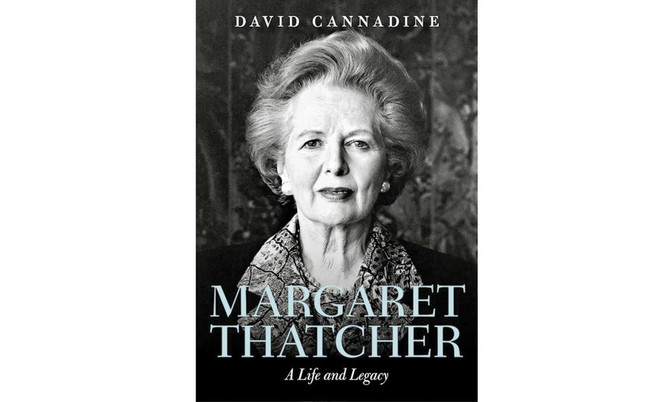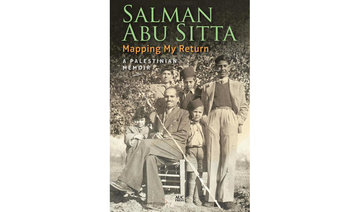Former French President Francois Mitterrand famously described her as having “the eyes of Caligula and the mouth of Marilyn Monroe.” But Margaret Thatcher is still widely remembered as “the Iron Lady,” a nickname that was given to her by the Russian media much to her delight.
The former British prime minister herself said, “If you want something said, ask a man; if you want something done, ask a woman.” For most of her public life, she was a woman in a world dominated by men. But why was Thatcher such a divisive political figure in the UK and on the international scene?
Historian and biographer David Cannadine has written an extraordinarily concise summary of Thatcher’s achievements and failures. Margaret Thatcher: A Life and Legacy was initially meant to be included as an entry in the Oxford Dictionary of National Biography. It ended up as the longest entry for any 20th-century prime minister since Churchill. Oxford University Press then decided to publish it as a book in view of its outstanding qualities. Cannadine has succeeded very well in highlighting all the stages of Thatcher’s astonishing career and does so in a marvel of compression.
From the very first page, we learn from Shirley Ellis, a childhood friend, that Margaret Thatcher “always stood out because teenage girls don’t know where they’re going. She did.” She was also serious, competitive and hard working — qualities that were nurtured from a very early age with many of her character traits coming from her father, Alfred Roberts. He was from a large family and was forced to leave school at the age of 13, but he was determined to improve himself, be successful and to help his fellow citizens. More than anything, he wanted his daughters to have the education he had been denied. While her sister trained to be a physiotherapist, Margaret, who was brighter and more ambitious, went to Oxford. Besides obtaining a second-class degree, she became president of the Oxford University Conservative Association. This prepared her for a political career.
Although she worked for a time as a research chemist, she had a passion for politics. She met Denis Thatcher at an electoral meeting in Dartford and they married in 1951 after a two-year courtship. The connections she made at Oxford, combined with her constant attendance at party conferences, would pay off. But she had to wait until 1959 before she was finally elected Conservative Member of Parliament for Finchley.
Two years later she was appointed parliamentary secretary to the minister of pensions, a post she held for three years. Then in 1964, the rival Labour Party won the elections. From 1964 to 1970, during her years in opposition, she held six shadow posts.
During those years, her husband suffered a nervous breakdown and her marriage broke down. Her husband eventually left her and went to South Africa. He came back and sold his company to Castrol for a very large profit and it then employed him. He retired in 1975, the same year his wife won the Conservative Party leadership. From then until his death he continued to be her most loyal supporter “for virtually the whole of their marriage…he had played the part of prime ministerial consort to perfection, and he was the best and perhaps the only friend she ever had,” wrote Cannadine.
During her early months as the head of the Conservative Party, Margaret Thatcher was eager to improve herself. Gordon Reece, a former television producer advised her about her clothes and she also trained with a voice coach to lower her pitch and soften her tone.
When the Conservatives were voted back into power in 1979, she became prime minister. “Yet, despite her confident manner and determined public demeanor, she was genuinely unsure of herself now that she had obtained the supreme office,” wrote Cannadine.
She was elected on the promise of implementing new policies; however, those policies increased the problems. But at the Tory Party conference in October 1980 she declared: “You turn if you want to. The lady’s not for turning.”
In April 1982 Argentina invaded the Falkland Islands and everything changed. Thatcher immediately appointed a small war Cabinet but was annoyed with Reagan who refused to support her because the US had friendly relations with both Britain and Argentina.
On May 21, the first amphibious landings took place on the Falklands, and on June 14 British soldiers recaptured Port Stanley. Soon after, Gen. Leopoldo Galtieri, head of the military junta in power in Argentina, resigned.
The victory boosted her popularity. Just a year before, Thatcher had been the most unpopular prime minister but by July 1982, her ratings were 51 percent. She had taken huge military and political risks, but she was resolute in staying the course. She proved herself once more to be the Iron Lady.
In 1983, she won the general elections for the second time and it was during this second term that her economic policies, dubbed “Thatcherism” or “popular capitalism,” showed good results. One and a half million council houses had been sold, which brought £28 billion into the Treasury. According to Thatcher, increasing the number of homeowners would strengthen conservative values. Thanks to privatization, former national industries were more competitive. Between 1981 and 1987, average wages rose by 3 percent a year. Financial deregulation triggered a credit boom; the use of credit cards became widespread; shops stayed open later and people spent more and Britain had become what Thatcher called, a nation of consumers.
She won the elections again in 1987. By May 1989 she had been in power for 10 years and was the 20th century’s longest serving prime minister. At the party conference, she was feted and adulated to the words of “10 more years, 10 more years.” No one then imagined that within one year, she would be gone.
The economic situation was beginning to show a darker side. The boom times had not benefited the entire nation and inequality had increased sharply. Many homeowners who had recently bought their council houses were worse off. Thatcher was also becoming increasingly critical of the European Community. During her final months in power, the invasion of Kuwait in August 1990 showed her declining influence on the world stage. George Bush was then in power and he, unlike Reagan, was not going to be intimidated by Thatcher. He was in charge of setting up an international coalition to drive Saddam Hussein out of Kuwait.
The Tory party was becoming increasingly divided over Europe and the economy was not in good shape, but Thatcher did not seem to care. She made a strong speech to the party conference reiterating her decision not to join the single European currency. Soon after, Howe, the only surviving member of her first Cabinet quit because he could no longer reconcile his loyalty to the prime minister with Britain’s real interests.
“It was a devastating performance, and all the more so coming from a mild-mannered and long-suffering minister, who was taking his belated revenge for the decade of bullying and humiliation he had endured at Thatcher’s hand,” wrote Cannadine
This unexpected resignation created an opportunity to challenge Thatcher for the Tory leadership. On the first ballot, she fell short of the majority required. Her Cabinet colleagues told her that she could not win on the second ballot having failed to gather the requisite votes. Thatcher then decided to withdraw. She showed extraordinary courage and dignity when she faced her enemies on both sides of the house for the last time. During this solo battle, she defended her record, refuted all interruptions and reiterated the fact that she had halted and reversed Britain’s decline.
But she had served her purpose, it was now time for her to leave. “The country had had enough of the bullying and berating, the hectoring and handbagging,” wrote Cannadine.
Thatcher left 10 Downing Street on Nov. 28, 1990. She would always feel bitter and resentful about the way she was suddenly and irreversibly discarded.
She was never really happy when she retired and she remained very much “herself.” She never forgave Oxford for not having awarded her an honorary degree and donated her massive archive to Churchill College, Cambridge. She wrote her memoirs, which were published in two volumes. As expected, the narrative was devoid of humor and she relished in describing everyone who opposed her in unflattering terms to say the least.
Her last years were sad and lonely. The first indication of her mental deterioration began in 1994 when she lost consciousness during a speech in Chile. She then began to experience memory losses and in 2002, following a stroke, it was announced that she would no longer make any public speeches.
In December 2012, she moved into the Ritz Hotel and she died the following year, following another stroke at the age of 87.
Cannadine’s book is a regal portrait of one of the world’s most famous women. It is incisive and full of interesting details. Thatcher is mostly remembered as being aggressive and uncompromising but there was another side to her. She was “a devoted and appreciative wife,” a loving mother who cried in public when for six days she had no news from her son who was taking part in a trans-Sahara race. She always did her best to look as attractive as possible. In that respect, the book’s cover photograph is awful and does not do her justice. She was always superbly coiffed with high heels to show off her legs and she changed her clothes several times a day. I can perfectly imagine her as Cannadine humorously describes her, “She also exploited her gender, treating her Cabinet colleagues in a way which no male prime minister could have done: brushing fluff from their shirt collars, straightening their ties, and buttoning (but not unbuttoning) their jackets.”
Brilliant and entertaining as this book is, I hope Cannadine is seriously considering writing a biography of Theresa May.
Book Review: Margaret Thatcher: The bully they called the ‘Iron Lady’
Book Review: Margaret Thatcher: The bully they called the ‘Iron Lady’

A 98-year-old in Ukraine walked miles to safety from Russians, with slippers and a cane

- Describing her journey, the nonagenarian said she had fallen twice and was forced to stop to rest at some points, even sleeping along the way before waking up and continuing her journey
KYIV, Ukraine: A 98-year-old woman in Ukraine who escaped Russian-occupied territory by walking almost 10 kilometers (6 miles) alone, wearing a pair of slippers and supported by a cane has been reunited with her family days after they were separated while fleeing to safety.
Lidia Stepanivna Lomikovska and her family decided to leave the frontline town of Ocheretyne, in the eastern Donetsk region, last week after Russian troops entered it and fighting intensified.
Russians have been advancing in the area, pounding Kyiv’s depleted, ammunition-deprived forces with artillery, drones and bombs.
“I woke up surrounded by shooting all around — so scary,” Lomikovska said in a video interview posted by the National Police of Donetsk region.
In the chaos of the departure, Lomikovska became separated from her son and two daughters-in-law, including one, Olha Lomikovska, injured by shrapnel days earlier. The younger family members took to back routes, but Lydia wanted to stay on the main road.
With a cane in one hand and steadying herself using a splintered piece of wood in the other, the pensioner walked all day without food and water to reach Ukrainian lines.
Describing her journey, the nonagenarian said she had fallen twice and was forced to stop to rest at some points, even sleeping along the way before waking up and continuing her journey.
“Once I lost balance and fell into weeds. I fell asleep … a little, and continued walking. And then, for the second time, again, I fell. But then I got up and thought to myself: “I need to keep walking, bit by bit,’” Lomikovska said.
Pavlo Diachenko, acting spokesman for the National Police of Ukraine in the Donetsk region, said Lomikovska was saved when Ukrainian soldiers spotted her walking along the road in the evening. They handed her over to the “White Angels,” a police group that evacuates citizens living on the front line, who then took her to a shelter for evacuees and contacted her relatives.
“I survived that war,’ she said referring to World War II. “I had to go through this war too, and in the end, I am left with nothing.
“That war wasn’t like this one. I saw that war. Not a single house burned down. But now – everything is on fire,” she said to her rescuer.
In the latest twist to the story, the chief executive of one of Ukraine’s largest banks announced on his Telegram channel Tuesday that the bank would purchase a house for the pensioner.
“Monobank will buy Lydia Stepanivna a house and she will surely live in it until the moment when this abomination disappears from our land,” Oleh Horokhovskyi said.
Amazon Purr-rime: Cat accidentally shipped to online retailer

- Galena was found safe by a warehouse worker at an Amazon center after vanishing from her home in Utah
LOS ANGELES: A curious cat that sneaked into an open box was shipped across the United States to an Amazon warehouse after its unknowing owners sealed it inside.
Carrie Clark’s pet, Galena, vanished from her Utah home on April 10, sparking a furious search that involved plastering “missing” posters around the neighborhood.
But a week later, a vet hundreds of miles (kilometers) away in Los Angeles got in touch to say the cat had been discovered in a box — alongside several pairs of boots — by a warehouse worker at an Amazon center.
“I ran to tell my husband that Galena was found and we broke down upon realizing that she must have jumped into an oversized box that we shipped out the previous Wednesday,” Clark told KSL TV in Salt Lake City.
“The box was a ‘try before you buy,’ and filled with steel-toed work boots.”
Clark and her husband jetted to Los Angeles, where they discovered Amazon employee Brandy Hunter had rescued Galena — a little hungry and thirsty after six days in a cardboard box, but otherwise unharmed.
“I could tell she belonged to someone by the way she was behaving,” said Hunter, according to Amazon.
“I took her home that night and went to the vet the next day to have her checked for a microchip, and the rest is history.”
What did people eat before agriculture? New study offers insight

- Analysis of forms — or isotopes — of elements including carbon, nitrogen, zinc, sulfur and strontium in these remains indicated the type and amount of plants and meat they ate
WASHINGTON: The advent of agriculture roughly 11,500 years ago in the Middle East was a milestone for humankind — a revolution in diet and lifestyle that moved beyond the way hunter-gatherers had existed since Homo sapiens arose more than 300,000 years ago in Africa.
While the scarcity of well-preserved human remains from the period preceding this turning point has made the diet of pre-agricultural people a bit of a mystery, new research is now providing insight into this question. Scientists reconstructed the dietary practices of one such culture from North Africa, surprisingly documenting a heavily plant-based diet.
The researchers examined chemical signatures in bones and teeth from the remains of seven people, as well as various isolated teeth, from about 15,000 years ago found in a cave outside the village of Taforalt in northeastern Morocco. The people were part of what is called the Iberomaurusian culture.
Analysis of forms — or isotopes — of elements including carbon, nitrogen, zinc, sulfur and strontium in these remains indicated the type and amount of plants and meat they ate. Found at the site were remains from different edible wild plants including sweet acorns, pine nuts, pistachio, oats and legumes called pulses. The main prey, based on bones discovered at the cave, was a species called Barbary sheep.
“The prevailing notion has been that hunter-gatherers’ diets were primarily composed of animal proteins. However, the evidence from Taforalt demonstrates that plants constituted a big part of the hunter-gatherers’ menu,” said Zineb Moubtahij, a doctoral student in archaeology at the Max Planck Institute for Evolutionary Anthropology in Germany and lead author of the study published on Monday in the journal Nature Ecology & Evolution.
“It is important as it suggests that possibly several populations in the world already started to include substantial amount of plants in their diet” in the period before agriculture was developed, added archeogeochemist and study co-author Klervia Jaouen of the French research agency CNRS.
The Iberomaurusians were hunter-gatherers who inhabited parts of Morocco and Libya from around 25,000 to 11,000 years ago. Evidence indicates the cave served as a living space and burial site.
These people used the cave for significant portions of each year, suggesting a lifestyle more sedentary than simply roaming the landscape searching for resources, the researchers said. They exploited wild plants that ripened at different seasons of the year, while their dental cavities illustrated a reliance on starchy botanical species.
Edible plants may have been stored by the hunter-gatherers year-round to guard against seasonal shortages of prey and ensure a regular food supply, the researchers said.
These people ate only wild plants, the researchers found. The Iberomaurusians never developed agriculture, which came relatively late to North Africa.
“Interestingly, our findings showed minimal evidence of seafood or freshwater food consumption among these ancient groups. Additionally, it seems that these humans may have introduced wild plants into the diets of their infants at an earlier stage than previously believed,” Moubtahij said.
“Specifically, we focused on the transition from breastfeeding to solid foods in infants. Breast milk has a unique isotopic signature, distinct from the isotopic composition of solid foods typically consumed by adults.”
Two infants were among the seven people whose remains were studied. By comparing the chemical composition of an infant’s tooth, formed during the breastfeeding period, with the composition of bone tissue, which reflects the diet shortly before death, the researchers discerned changes in the baby’s diet over time. The evidence indicated the introduction of solid foods at around the age of 12 months, with babies weaned earlier than expected for a pre-agricultural society.
North Africa is a key region for studying Homo sapiens evolution and dispersal out of Africa.
“Understanding why some hunter-gatherer groups transitioned to agriculture while others did not can provide valuable insights into the drivers of agricultural innovation and the factors that influenced human societies’ decisions to adopt new subsistence strategies,” Moubtahij said.
Palestinian prisoner in Israel wins top fiction prize

- The mask in the novel’s title refers to the blue identity card that Nur, an archaeologist living in a refugee camp in Ramallah, finds in the pocket of an old coat belonging to an Israeli
ABU DHABI: Palestinian writer Basim Khandaqji, jailed 20 years ago in Israel, won a prestigious prize for Arabic fiction on Sunday for his novel “A Mask, the Color of the Sky.”
The award of the 2024 International Prize for Arabic Fiction was announced at a ceremony in Abu Dhabi.
The prize was accepted on Khandaqji’s behalf by Rana Idriss, owner of Dar Al-Adab, the book’s Lebanon-based publisher.
Khandaqji was born in the Israeli-occupied West Bank city of Nablus in 1983, and wrote short stories until his arrest in 2004 at the age of 21.
He was convicted and jailed on charges relating to a deadly bombing in Tel Aviv, and completed his university education from inside jail via the Internet.
The mask in the novel’s title refers to the blue identity card that Nur, an archaeologist living in a refugee camp in Ramallah, finds in the pocket of an old coat belonging to an Israeli.
Khandaqji’s book was chosen from 133 works submitted to the competition.
Nabil Suleiman, who chaired the jury, said the novel “dissects a complex, bitter reality of family fragmentation, displacement, genocide, and racism.”
Since being jailed Khandaqji has written poetry collections including “Rituals of the First Time” and “The Breath of a Nocturnal Poem.”
He has also written three earlier novels.
Mexican doctor claims victory in $28 Cartier earrings battle

MEXICO CITY: A Mexican man has claimed a victory over French luxury brand Cartier, saying an error allowed him to buy two pairs of earrings for $28 that were supposed to cost nearly $28,000.
After a four-month struggle, doctor Rogelio Villarreal said he had finally received the jewelry, which he accused the company of refusing to deliver after his online purchase in December.
According to Villarreal, he came across the low-priced earrings while browsing Instagram.
“I swear I broke out in a cold sweat,” he wrote on the social media platform X.
Cartier declined to recognize the purchase and offered Villarreal a refund, as well as a bottle of champagne and a passport holder as compensation, according to a company letter shared by the doctor.
But Villarreal refused and decided to take the case to Mexico’s consumer protection agency, which ruled in favor of the doctor.
Cartier accepted the decision, Villarreal announced.
“War is over. Cartier is complying,” he wrote.


















